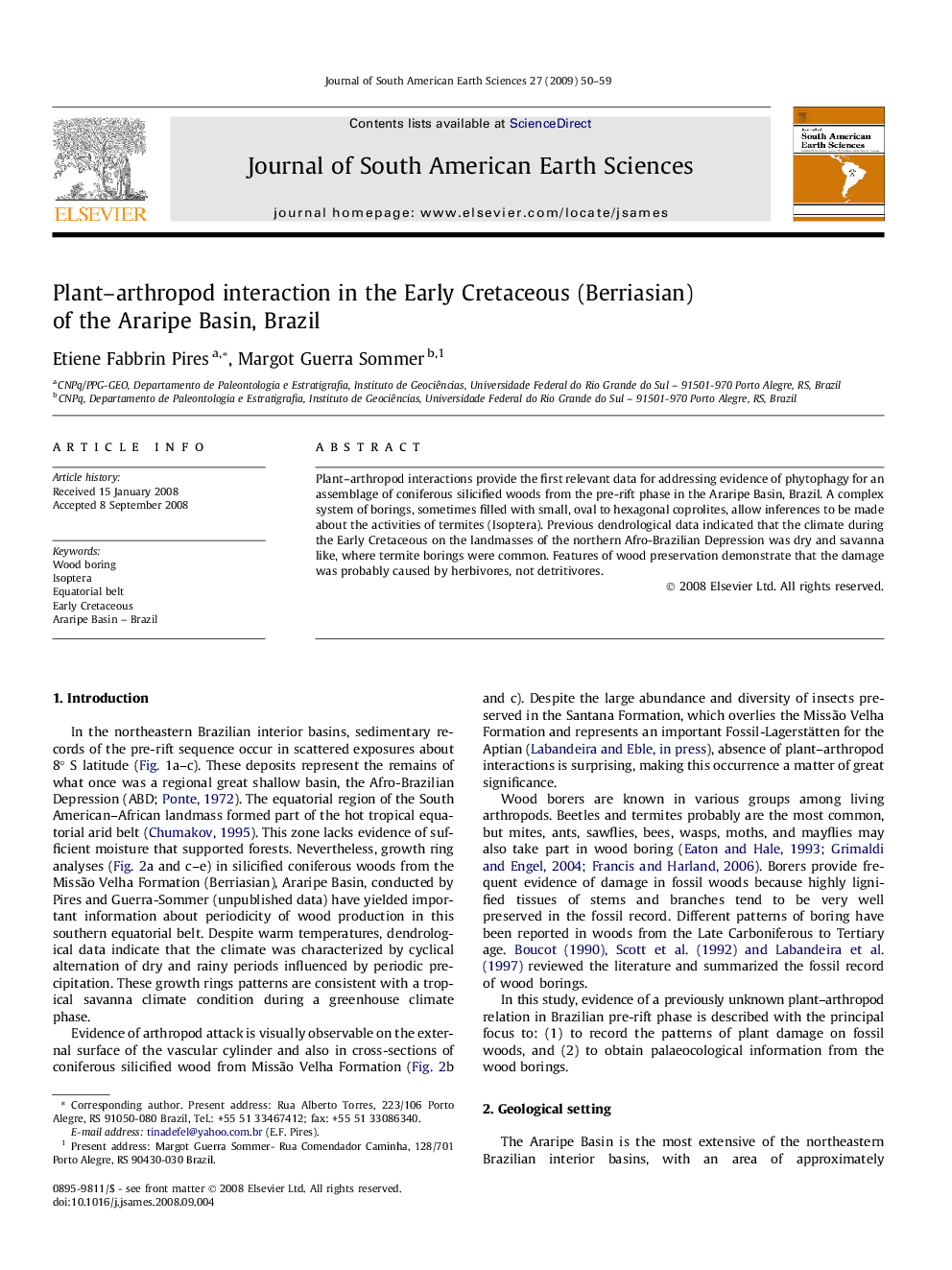| Article ID | Journal | Published Year | Pages | File Type |
|---|---|---|---|---|
| 4682896 | Journal of South American Earth Sciences | 2009 | 10 Pages |
Abstract
Plant–arthropod interactions provide the first relevant data for addressing evidence of phytophagy for an assemblage of coniferous silicified woods from the pre-rift phase in the Araripe Basin, Brazil. A complex system of borings, sometimes filled with small, oval to hexagonal coprolites, allow inferences to be made about the activities of termites (Isoptera). Previous dendrological data indicated that the climate during the Early Cretaceous on the landmasses of the northern Afro-Brazilian Depression was dry and savanna like, where termite borings were common. Features of wood preservation demonstrate that the damage was probably caused by herbivores, not detritivores.
Keywords
Related Topics
Physical Sciences and Engineering
Earth and Planetary Sciences
Earth and Planetary Sciences (General)
Authors
Etiene Fabbrin Pires, Margot Guerra Sommer,
